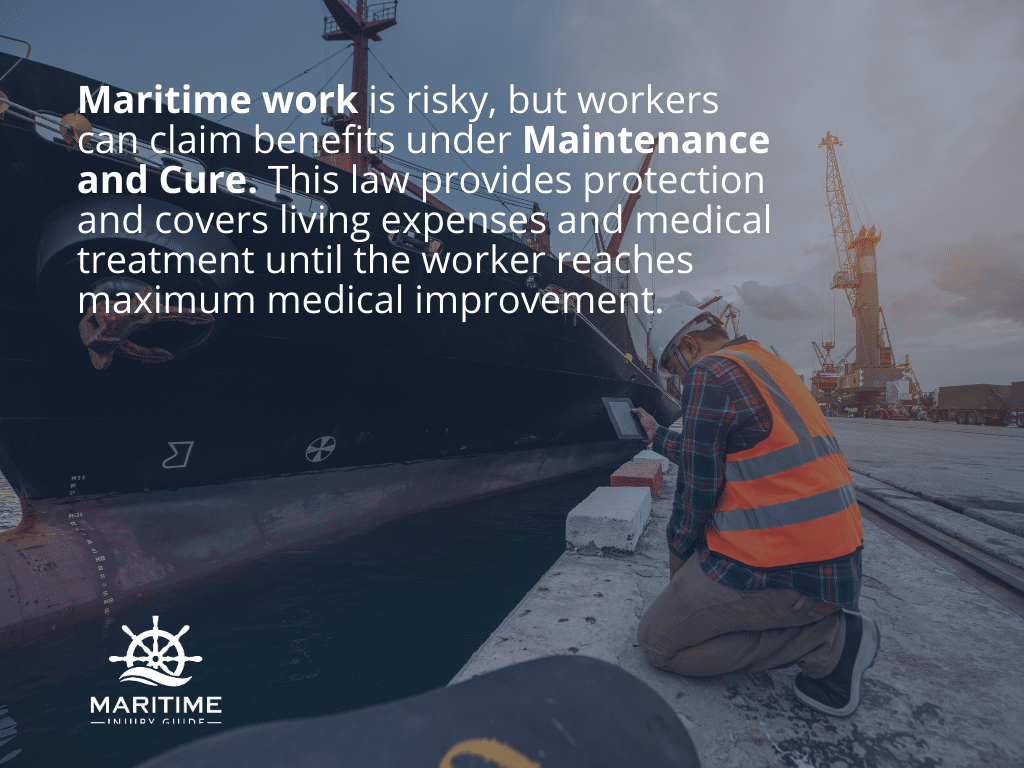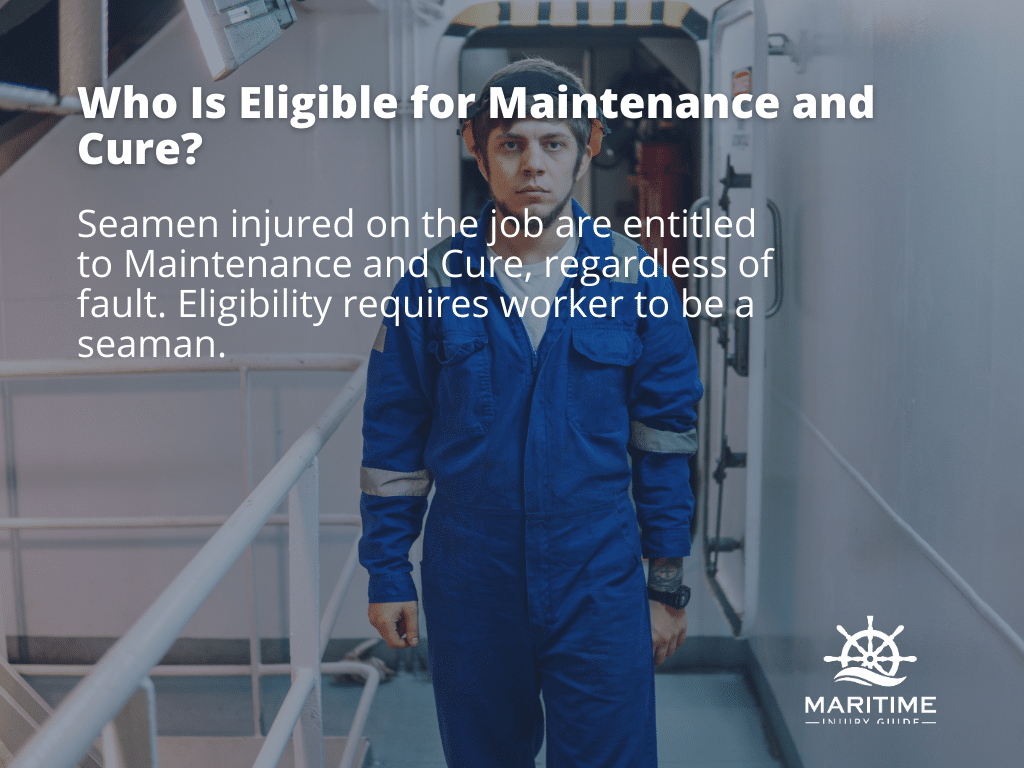As a maritime worker, you are entitled to various benefits under the law. These benefits include Maintenance and Cure, a legal principle that recognizes the unique risks and hazards of maritime work and provides compensation for injured seamen and maritime workers.
In this blog, we will discuss more what the benefits of Maintenance and Cure entail, who is eligible for it, and how to obtain it.

Maritime workers face a variety of risks and hazards on the job. From the danger of working on rough seas to the risk of falling overboard, maritime work can be physically demanding and dangerous.
When maritime workers are injured on the job, they are entitled to various benefits under the law such as Maintenance and Cure.
For maritime workers, Maintenance and Cure is an important law that offers protection in the event of an injury or illness regardless of how the accident happened and regardless of who is at fault. This is how Maintenance and Cure is defined in regard to maritime law:
Understanding Maintenance
Injured seamen are granted a certain amount of financial compensation until medical recovery is complete. Maintenance is the daily living allowance provided to an injured maritime worker and it may be provided regardless if the employer was at fault for the injuries.
Maintenance is designed to be enough to cover basic needs such as food, clothing, transportation, shelter, and utilities. However, Maintenance only covers necessary living expenses. Therefore, compensation for entertainment items (WiFi, cable television, etc) is not included.
Understanding Cure
Maintenance is intended to cover the costs of a maritime worker’s daily living expenses until medical recovery is complete. On the other hand, Cure addresses medical expenses that may arise as a result of injuries that happened to seamen on the job.
In other words, a seaman’s employer is required to pay medical expenses associated with the injury. These medical expenses may include:
- Hospitalization and medical consultations
- Surgical procedures
- Prescribed medications to treat the injury
- Diagnostic imaging tests (MRI or CT scans)
- Costs of medical equipment (wheelchairs, crutches, etc.)
- Transportation expenses for traveling to and from medical appointments or treatments
The benefit of cure should last until the worker is fully recovered and, if applicable, physically capable of resuming work or after a doctor issues a release form.

Who Is Eligible for Maintenance and Cure?
When injured on the job, seamen are entitled to Maintenance and Cure rights, regardless if the injuries happened because of their own negligence or the negligence of another party, such as an employer or vessel owner. This means that even if you were injured due to your own negligence, you may still be eligible for these benefits.
However, to be eligible for Maintenance and Cure, a worker must be considered a seaman. A seaman is someone who works on a vessel that is in navigation and contributes to the vessel’s function. They must spend at least 30% of their working time with that ship or fleet of ships. In addition, the employee’s duties must directly contribute to the ship’s functions or to accomplishing its assigned tasks.
This definition can be complex as it is subject to interpretation. For example, some workers who spend only a small amount of time on a vessel may still be eligible for Maintenance and Cure and, in some cases, workers who are injured while working on a vessel that is not in navigation may still be eligible for Maintenance and Cure. Therefore, it is important to speak with an attorney to determine your eligibility for these benefits.

How To Obtain Maintenance and Cure:
To obtain Maintenance and Cure benefits, it is recommended that maritime workers who have been injured on the job:
- Report the Injury: It is crucial to report the injury to the employer as soon as possible as there are time limits to file a claim. The sooner the injury is reported, the better it is for the seaman’s case.
- Seek Medical Attention: It is of great help to keep all medical records and bills related to the injury. The worker should also inform the medical provider that they were injured while working at sea and that they require medical care as a result of their job-related injury.
- Gather evidence: In addition to medical records, other evidence relating to your injury may help to support your claim for compensation. This can include witness statements, photographs of the injury, and any other relevant documents related to the injury or the working conditions at sea.
- Consult with an Experienced Maritime Law Attorney: A skilled maritime law attorney can help injured maritime workers understand their rights and navigate the complex legal process involved in obtaining Maintenance and Cure benefits. The attorney will help ensure that the worker receives the full compensation they are entitled to.
The process of obtaining Maintenance and Cure benefits can be challenging and time-consuming. Therefore, it is highly recommended that injured maritime workers seek the assistance of an experienced maritime law attorney who can provide guidance and support throughout this process.
At Maritime Injury Guide we are here to help and offer FREE legal consultations. If you or a loved one have been injured due to employer negligence and you want to learn more about your rights and compensation that may be available to you, complete the form on this page or call 866-871-8422 now.
Sources:
https://www.maritimeinjuryguide.org/jones-act/who-qualifies-under-jones-act/
https://www.maritimeinjuryguide.org/maritime-rights-compensation/maintenance-cure-benefits/